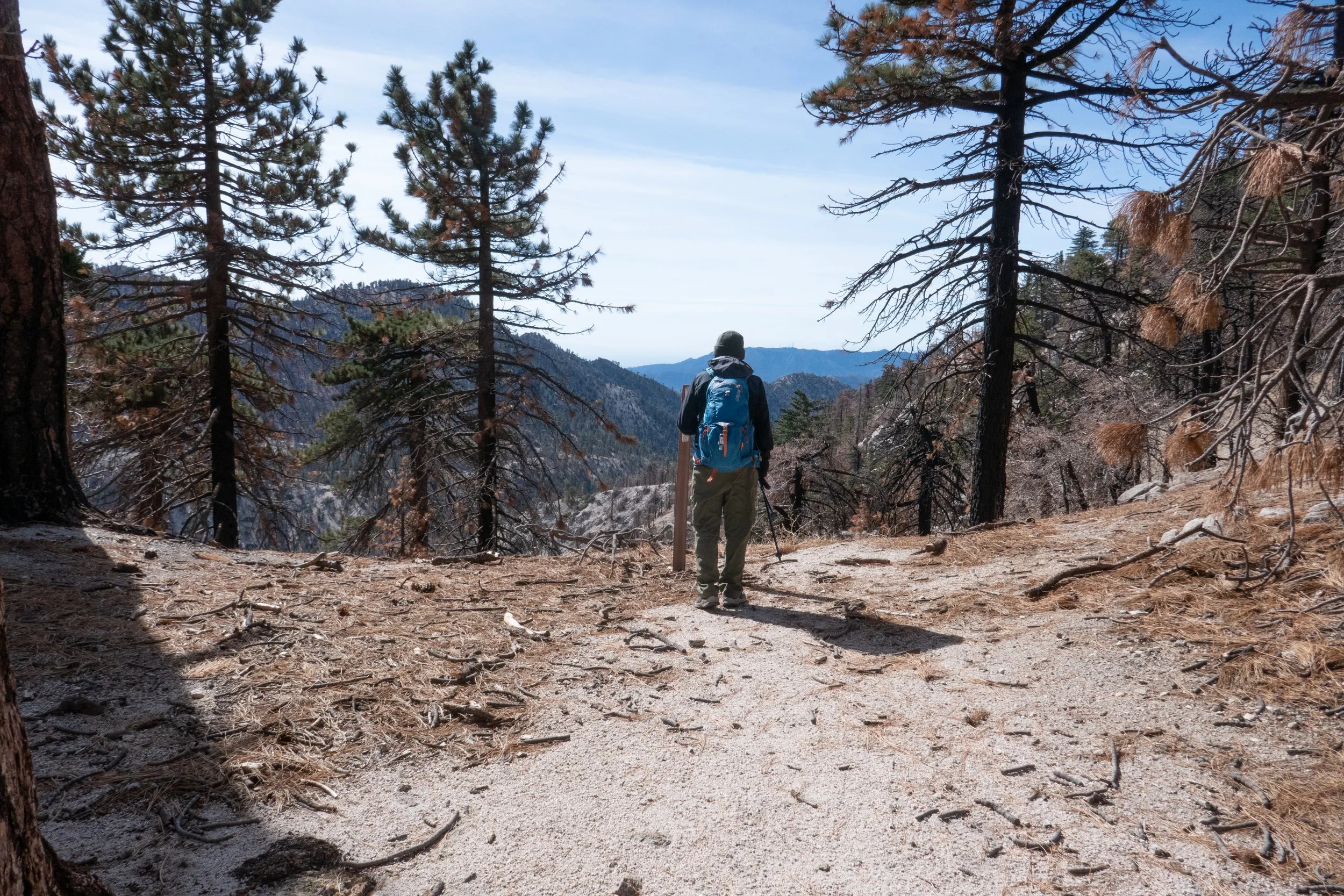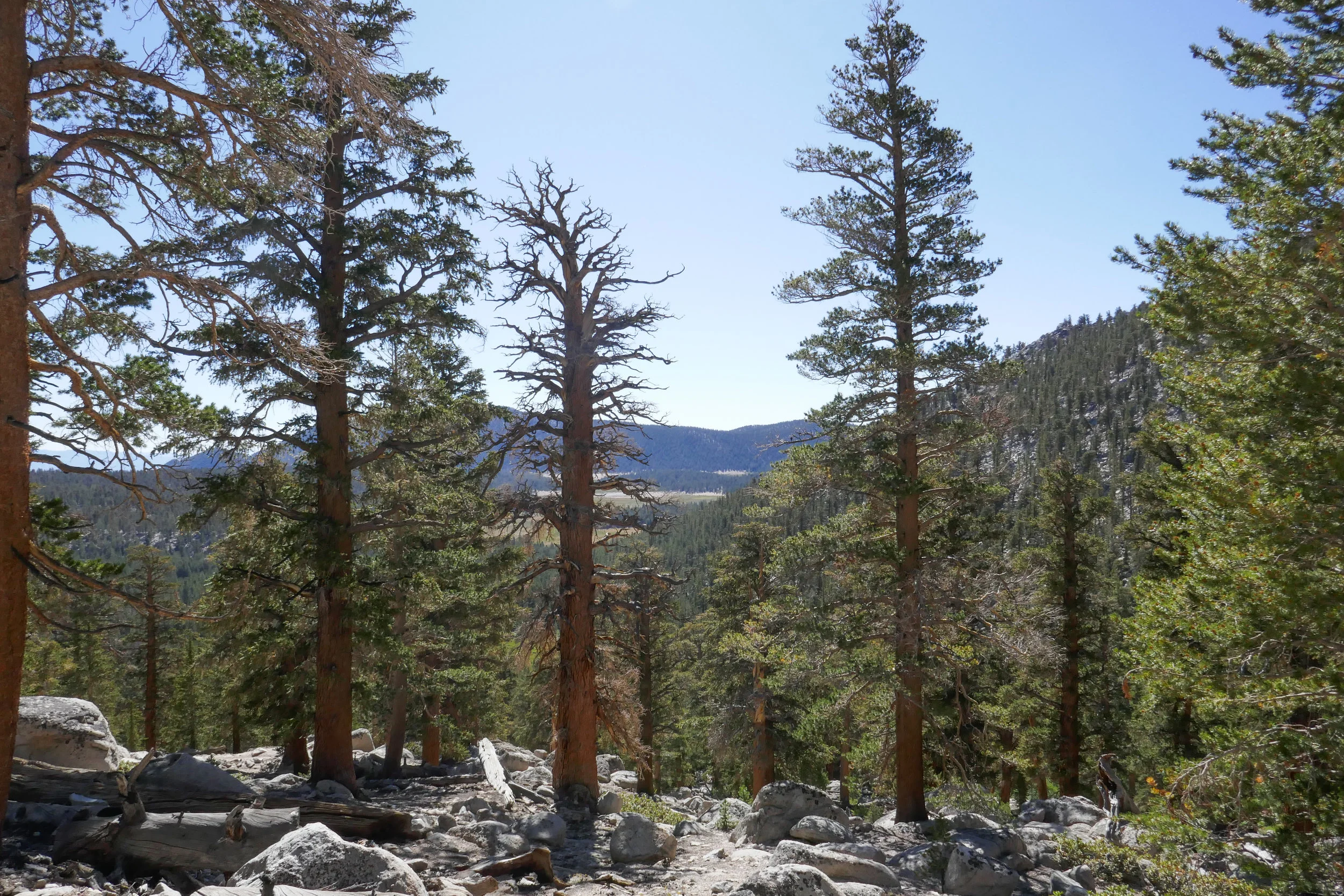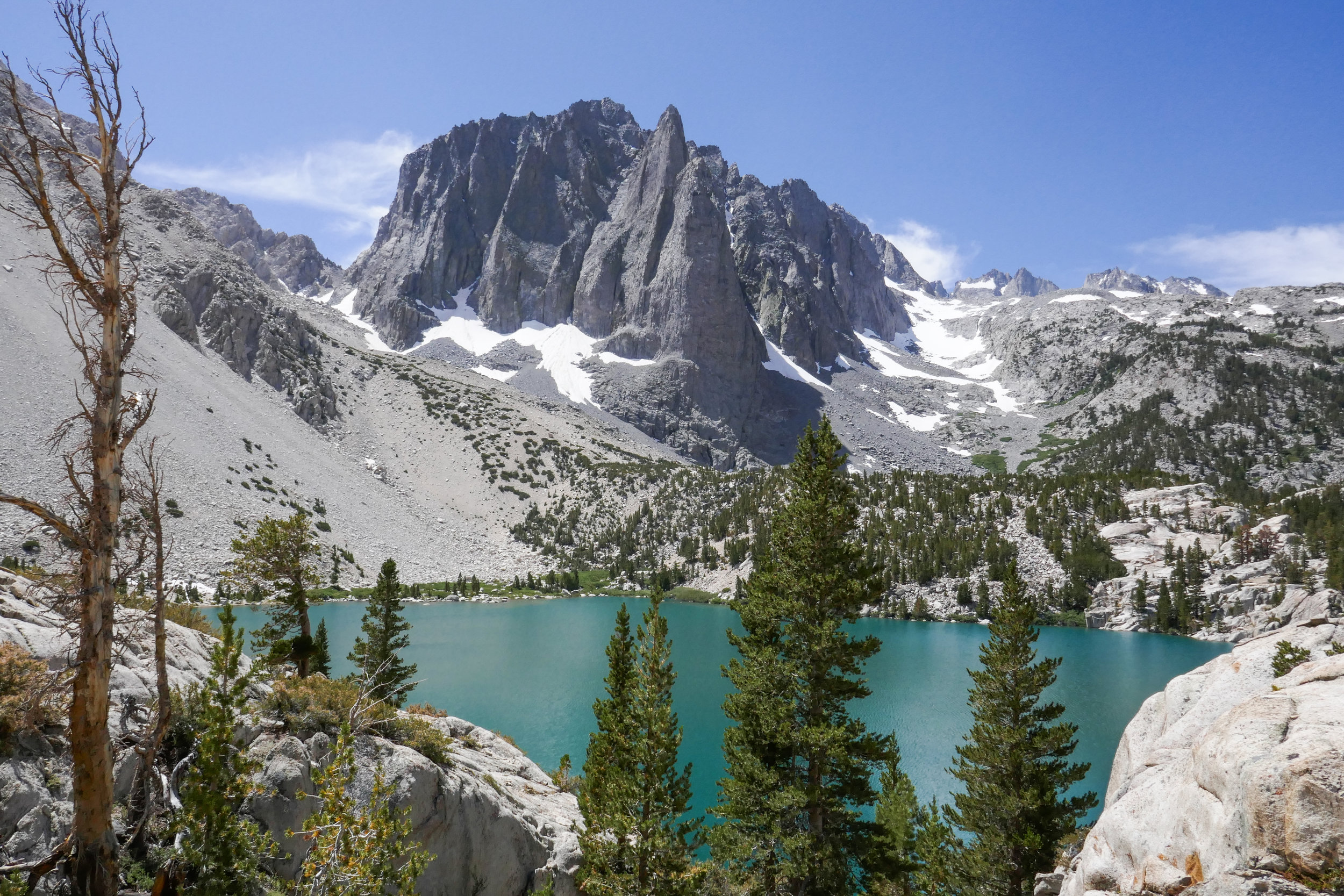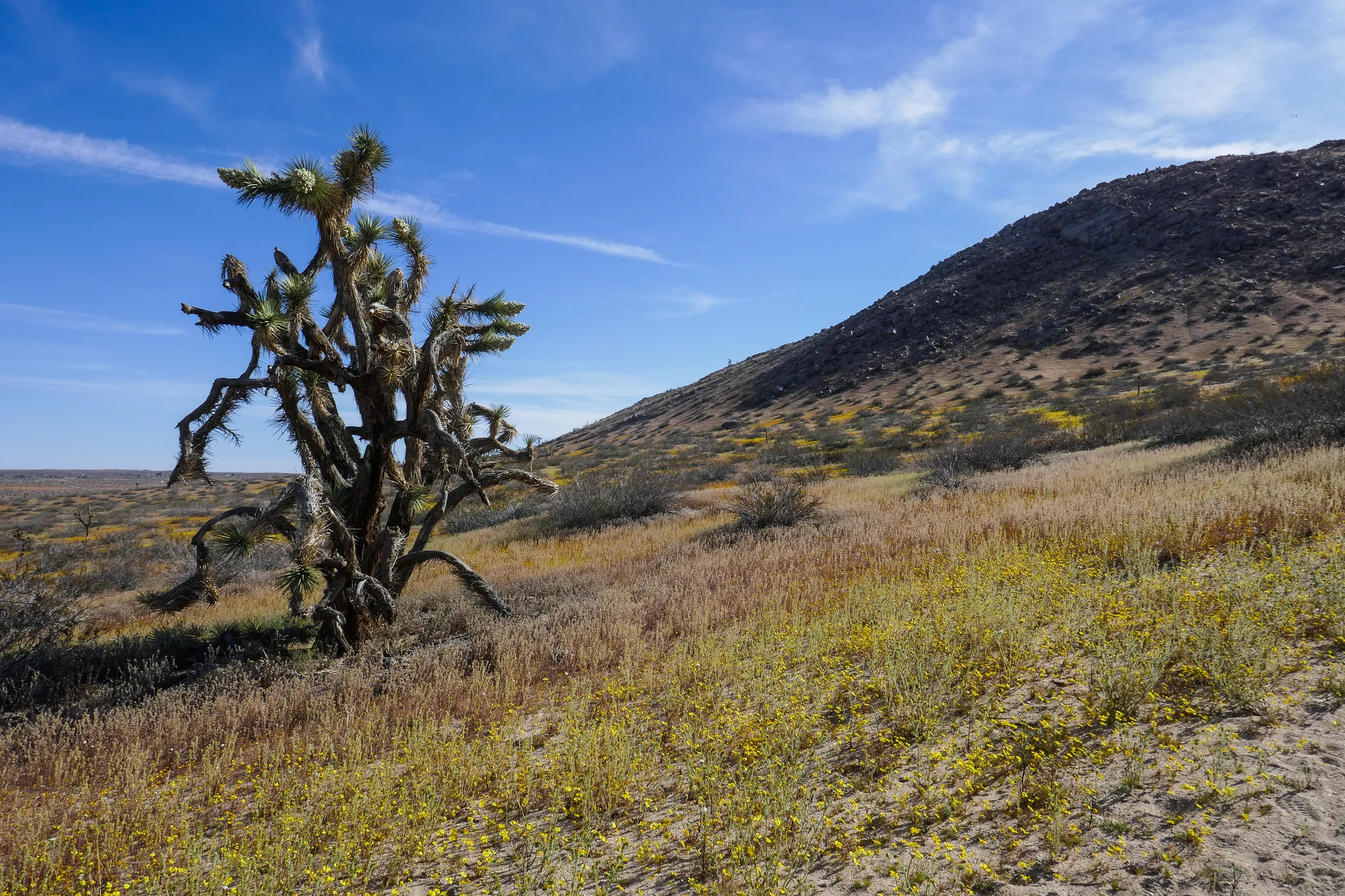Big Horn Mine has been on my list of hikes to do, and Sunday was the perfect day to do it. We arrived at the trailhead at Vincent’s Gap plenty early. It was still dark and since this was a short 4 mile hike, I wanted to be able to enjoy the scenery and take some photos along the route. We waited until about 6:30 when dawn began to turn black skies to blue and began our trek. Some people parked on the opposite side of the parking lot fired up a grill and started cooking breakfast. The delicious smell of bacon in the air made my stomach grumble, but we had a mine to explore.
This hike starts out on an old wagon road that winds around Mount Baden-Powell. The last time I was here we had hiked up to the top of that mountain which stands at 9,406’. Today we were on the lower slopes, and I took some lovely photos of the moon up over the ridge. After about 200 yards in, we came to a split with two signs: Mine Gulch left and Big Horn Mine right. I later learned that taking the Mine Gulch trail would have taken us to Vincent’s Cabin. I’d like to check that out someday.
I should note a short bit of history about the mine: Big Horn Mine was discovered by Charles “Tom” Vincent in 1895. He lived in the log cabin that you can still visit today. The mine was profitable from 1903 to 1906. Eventually, it was tapped out and abandoned.
The trail to the mine is pretty easy as you wind along the mountain on the wagon road enjoying views from some of the tallest peaks in the range. However, as you get further along, the trail begins to narrow and sections become steep and rocky with loose gravel. Some areas were so narrow that there was only room to place one foot. Rather then give myself time to think about the plunging descent to my side, I chose to focus on moving forward and getting to our destination. In just a few moments the trail widened again, and soon the mine came into view just as the golden rays of morning sunshine were coming up over the San Gabriels.
Just one more sketchy scramble to get through to get up to the structure and we had arrived! No other hikers in sight yet, so we enjoyed exploring the outer structure and the views of the surrounding mountains. We did not go inside the mine. While you can crawl through some boards to get inside, it is not advised because the mine is deteriorating and subject to collapse.
After we were done exploring, we headed back the way we came. We veered off the main trail to do some quick exploring on a use trail that led us to what looked like the remains of another structure. Not sure what that was, but we eventually made our way back to the main trail and back to trailhead. As per usual, we stopped by the Grizzly Cafe for some delicious coffee and breakfast. Great hike today with a lot of history!
Read More

















